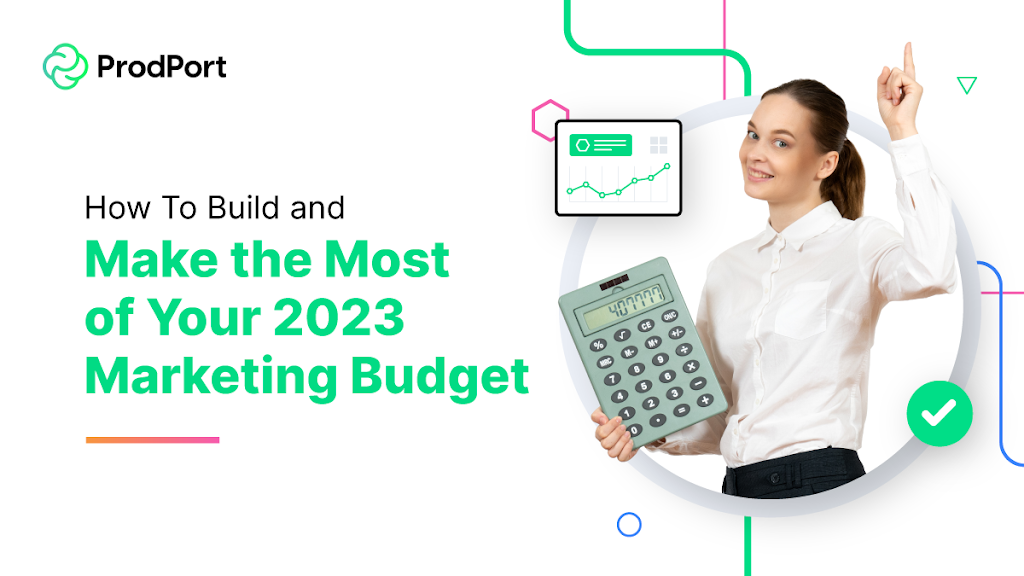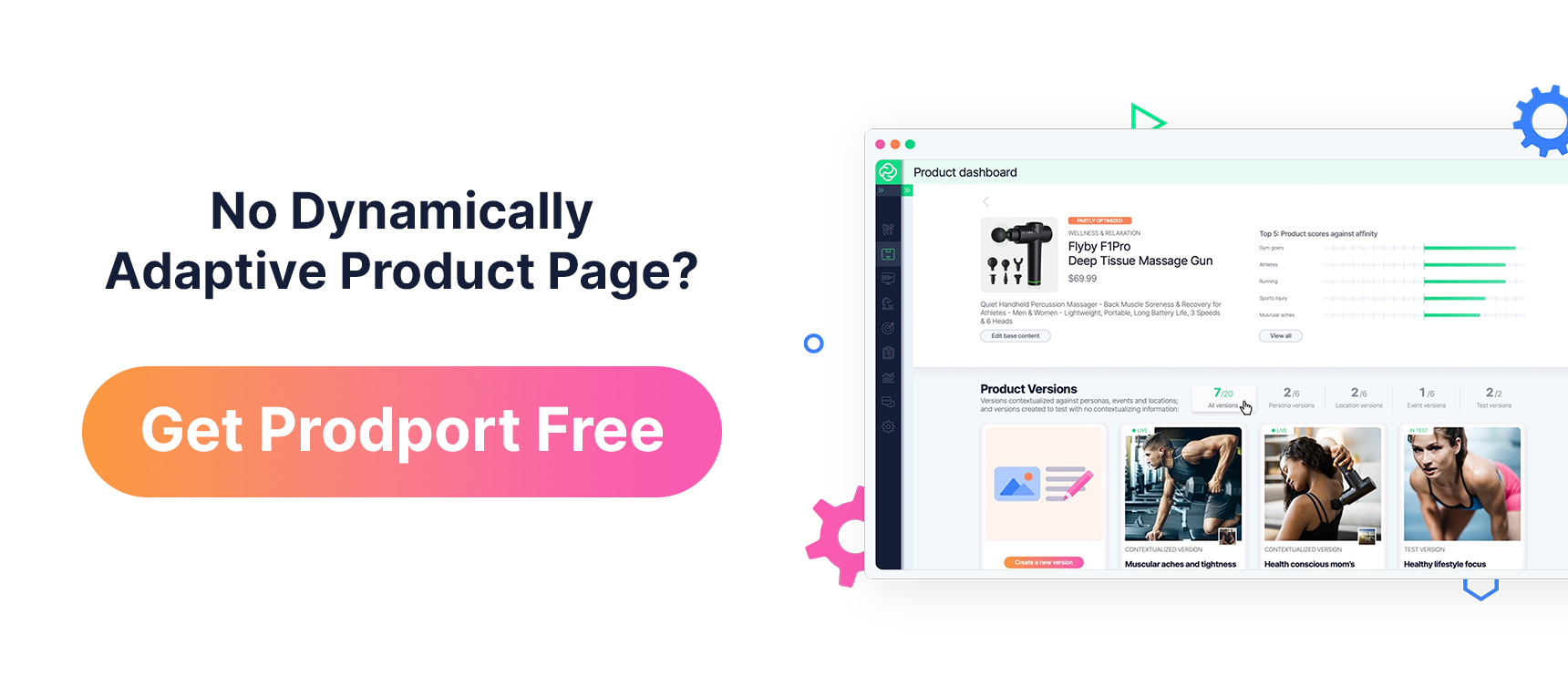The new year is here, which means it’s time to finalize your budget for what’s sure to be another interesting year in marketing. If you’re still buttoning up the details, or have a set goal to achieve and looking how to invest it, use this guide to make sure that you’re setting yourself up for success so you can get the most out of every penny spent.
1. Define Your Budget and Work Backward from your Goals
The best way to determine your budget is to work backward from your revenue and profitability targets. This ensures that you’re as prepared as possible to execute and achieve those goals. Here’s an example of what we mean:
Step 1: Define your revenue or profitability goals. For the purpose of this exercise, let’s assume we’re setting out to achieve $1M in revenue in 2023
Step 2: Consider what you need to budget based on the expected performance of your marketing channels. Use baselines from prior years and account for the expected lift from new tooling, software, and/or technology you plan to employ.
For example, your thinking might look like this, where you’ll first account for the expected contribution of your organic and retention channels, then figure out how much additional budget is needed for paid marketing to reach your revenue goals.
Here are a few examples that might be relevant for you.
Organic marketing/SEO:
- Cost: $10,000
- Expected site visitors: 200,000
- Expected conversion rate: 2.5%
- AOV: $50
- Expected conversions: 2,500
- Expected revenue: $250,000
Email/SMS marketing
- Cost: $10,000
- Expected visits: 25,000
- Expected conversion rate: 4%
- AOV: $50
- Expected conversions: 1,000
- Expected revenue $50,000
Knowing that we can expect $300,000 from our organic and email/SMS channels, we need to plan for $700,000 in contribution from our paid channels. So the question becomes, how much will it take in paid spend to get there?
Paid Spend:
- Required revenue: $700,000
- AOV: $50
- Required orders: 14,000
- Expected conversion rate: 2.5%
Dividing 14,000 by 2.5% gets us to the required amount of site visits to reach our revenue goal: 560,000. Based on our average CTR of 1%, we need about 56,000,000 impressions to reach our goal.
- Site visits needed: 560,000
- Average CTR: 1%
- Impressions required 56,000,000
- CPM: $10
Knowing our media buys average to about a $10 CPM (cost per 1,000 impressions), we can now calculate our required budget for paid spend:
56,000,000/1,000 x $10 = $560,000
Adding all of the program costs up, we now have our approximate marketing budget for this year:
Organic/SEO: $10,000
Email/SMS: $10,000
Paid Marketing: $560,000
Total: $580,000
2. Know Where to Invest
Does that budget seem like a lot? It sure is. With the rising costs of email marketing platforms, paid media, and marketing in general, it’s more important than ever to consider adding tools to your marketing stack that will have an outsized ROI by lifting conversion rates, clickthrough rates, etc.
For example, do you need to invest in a new process to increase conversion rate? A tool like Prodport helps ecommerce brands increase conversion rates in the funnel by dynamically personalizing product pages.
With a budget in mind, it’s time to figure out where you’ll put each dollar and cent. Whether you’re a new brand, having the right tools and plans in place will affect whether you meet, exceed, or fall short of your overall revenue goals for the year.
The outsized impact of Personalization and CRO
Now is the time to invest in personalization—but not just short-term landing pages or your home page. You need to personalize product pages and Prodport is the only tool that allows you to do this with ease and affordability.
Not only is it a lighter lift on your team, but Prodport clients also see conversion rate increases of 25 percent and higher when they leverage our Shopify technology.
As an example, if we were to increase the overall conversion rate by 25% on our marketing budget outlined above, we’d see the following jumps in revenue:
- Organic/SEO: $250,000 → $312,500
- Email/SMS: $50,000 → $62,500
- Paid Marketing: $700,000 → $875,000
By increasing conversion rate, we now give ourselves the latitude to do one of a few things with this year’s marketing budget. For example, we could:
- Reduce paid marketing spend and increase overall profitability
- Divert the investment to other growth areas with a higher ROI
All of which go to show how impactful even a small incremental lift on conversion rate can have on the growth of a business.
Looking for a real life example of this? Look no further than our customer Furesque, who saw higher conversions across all their marketing channels, including:
- 2.55 percent increase in ROAS on Facebook
- 2.76 percent increase in email revenue
3. Track Your Progress and Adjust as Needed
The only way to know if your budget is helping to get you closer to your revenue is to establish KPIs and set up tracking right away. Here are a few metrics we recommend tracking from the start:
- Conversion rate: The rate at which visitors are converting to a buyer. Track fluctuations here and look for ways to increase this with tools like Prodport. As demonstrated above even seemingly small increases in conversion rate can result in huge gains to the bottom line.
- Customer LTV: The total value of a customer over the course of their relationship with you.
- Customer retention rate: The percentage of customers who remain customers over a given period of time.
- Average order value: Average amount spent for each order placed.
- Cart abandonment rate: The percentage of customers who leave the cart before checking out.
The key to leveraging this data is to collect the numbers and then analyze them qualitatively to shift your strategy and budget as needed. For example, if you see a drop in conversion rates MoM for multiple months, you need to ask why this might be happening and then test a potential fix. In this case, Prodport is a solution that can be implemented and tested as a way to start increasing conversion rates again.
Finalize Your 2023 Budget ASAP
Now is the time to finalize your budget and start taking action. We hope you use these strategies to determine exactly what you need—and more importantly—optimize your efforts with product personalization so you can meet and exceed the revenue targets you’ve set for 2023.

